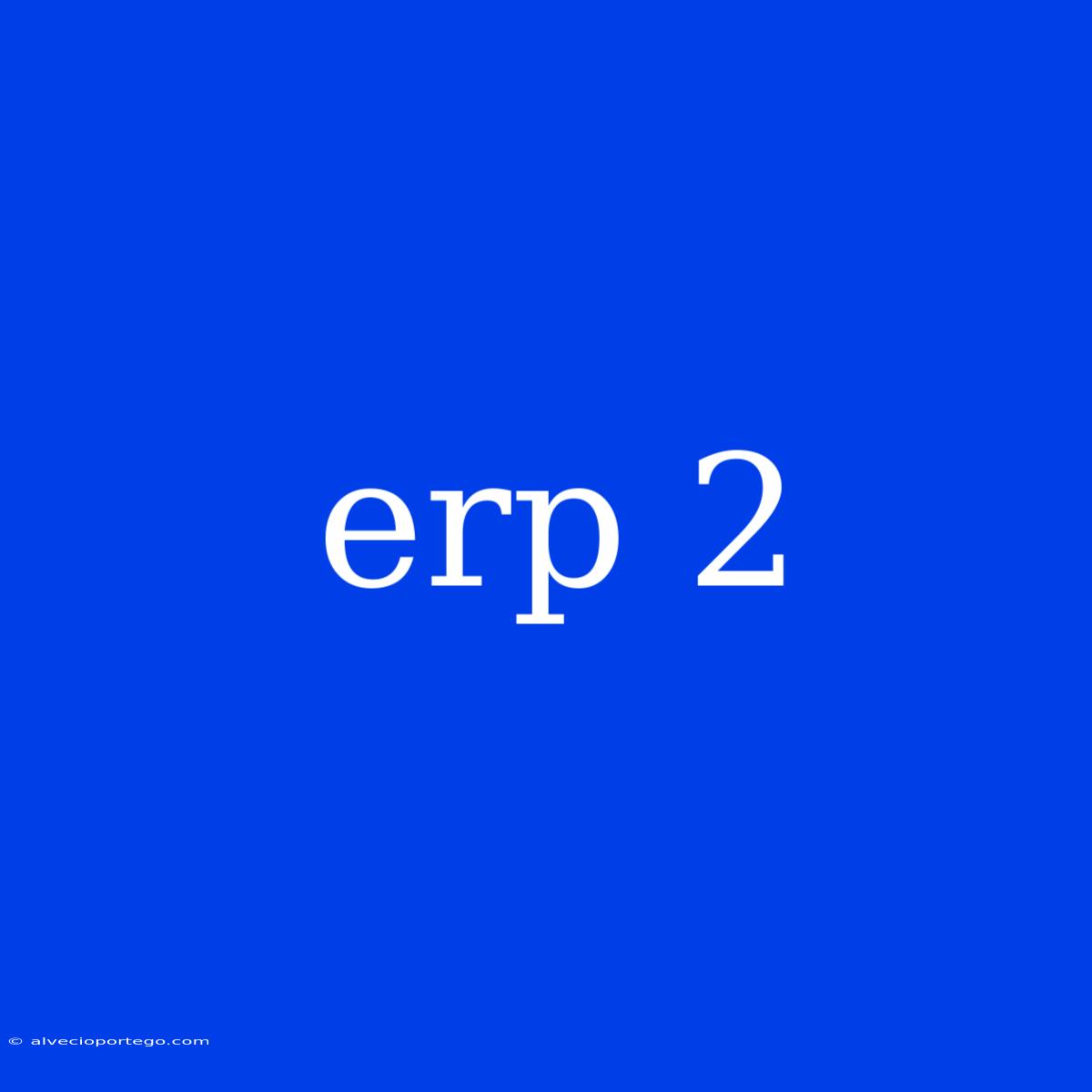ERP 2.0: The Next Generation of Enterprise Resource Planning
Enterprise Resource Planning (ERP) has come a long way since its inception. While traditional ERP systems focused primarily on back-office functions like finance, accounting, and inventory management, the landscape is rapidly evolving with the rise of ERP 2.0.
What is ERP 2.0?
ERP 2.0 represents the next generation of ERP systems, characterized by its increased focus on agility, scalability, and integration. It leverages modern technologies like cloud computing, mobile accessibility, artificial intelligence (AI), and the Internet of Things (IoT) to enhance business processes and empower employees.
Key Features of ERP 2.0:
- Cloud-Based Architecture: ERP 2.0 systems are primarily hosted in the cloud, offering greater flexibility, scalability, and reduced IT infrastructure costs.
- Mobile Accessibility: Employees can access key business data and functionalities through mobile devices, promoting real-time collaboration and decision-making.
- Artificial Intelligence (AI) Integration: AI algorithms can automate tasks, optimize processes, and provide predictive analytics for improved decision-making and resource allocation.
- Internet of Things (IoT) Integration: Integrating IoT sensors and devices allows businesses to collect real-time data from their operations, leading to enhanced efficiency and insights.
- Data Analytics and Business Intelligence: ERP 2.0 systems provide robust data analytics tools to track key performance indicators (KPIs), identify trends, and gain valuable insights for informed decision-making.
- Enhanced User Experience: User interfaces are designed to be intuitive and user-friendly, making it easier for employees to access and utilize the system's functionalities.
- Improved Security and Compliance: Cloud-based systems often have robust security measures and built-in compliance features, ensuring data protection and regulatory adherence.
Benefits of ERP 2.0:
- Increased Efficiency and Productivity: Streamlined workflows, automated tasks, and real-time access to information contribute to improved operational efficiency.
- Enhanced Collaboration and Communication: Real-time data sharing and mobile accessibility foster better collaboration between teams and departments.
- Improved Decision-Making: Data analytics and predictive insights enable businesses to make better informed decisions, leading to better business outcomes.
- Reduced Costs: Cloud-based systems reduce IT infrastructure costs, while automation and optimized processes minimize manual tasks and related expenses.
- Enhanced Agility and Scalability: ERP 2.0 systems are designed to adapt quickly to changing business needs, allowing for seamless scaling as businesses grow.
- Competitive Advantage: By leveraging advanced technologies and functionalities, ERP 2.0 provides businesses with a competitive edge in today's digital world.
Considerations for Implementing ERP 2.0:
- Cost and Budget: Implementing a new ERP system requires significant investment, so it's crucial to have a clear budget and ROI assessment.
- Data Migration: Transferring data from existing systems to the new ERP 2.0 platform can be a complex process requiring careful planning and execution.
- Training and Support: Employees need proper training to effectively utilize the new system. Ongoing support and user documentation are also essential for successful adoption.
- Integration with Existing Systems: The new ERP system should seamlessly integrate with existing business applications to avoid data silos and streamline processes.
Conclusion:
ERP 2.0 represents a significant advancement in enterprise resource planning, offering businesses unprecedented opportunities to optimize operations, enhance collaboration, and gain a competitive advantage. By leveraging modern technologies and functionalities, businesses can unlock the full potential of their data and processes, leading to increased efficiency, profitability, and growth.

